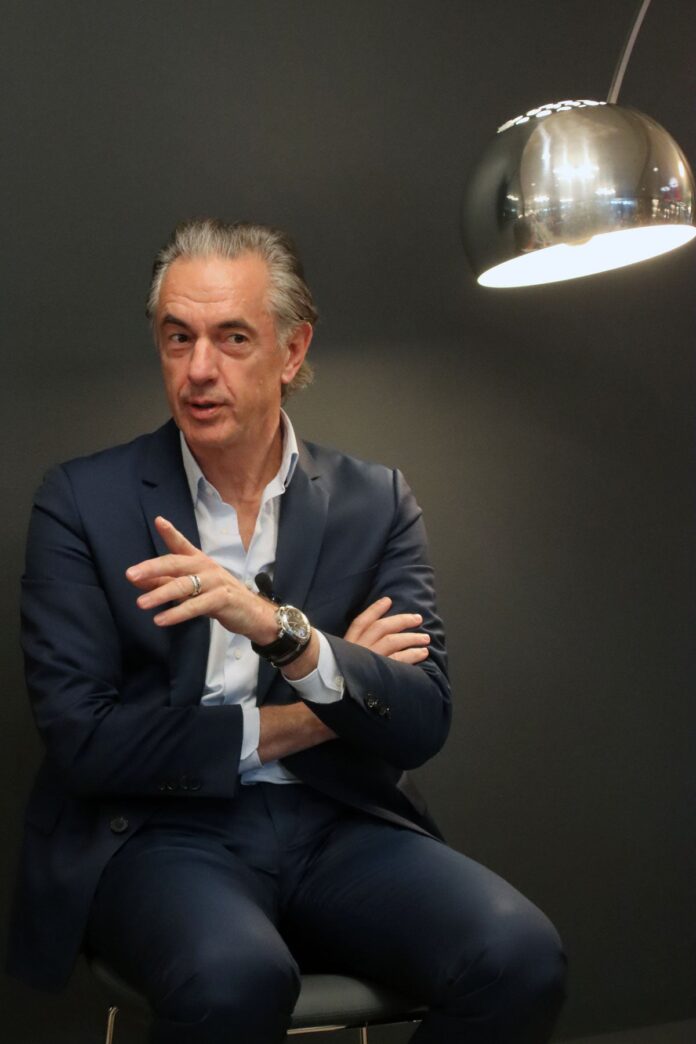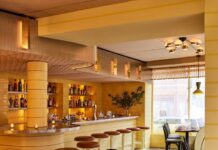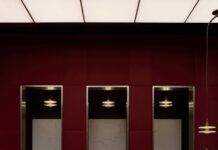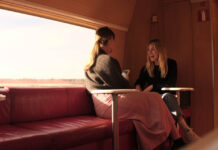[ad_1]
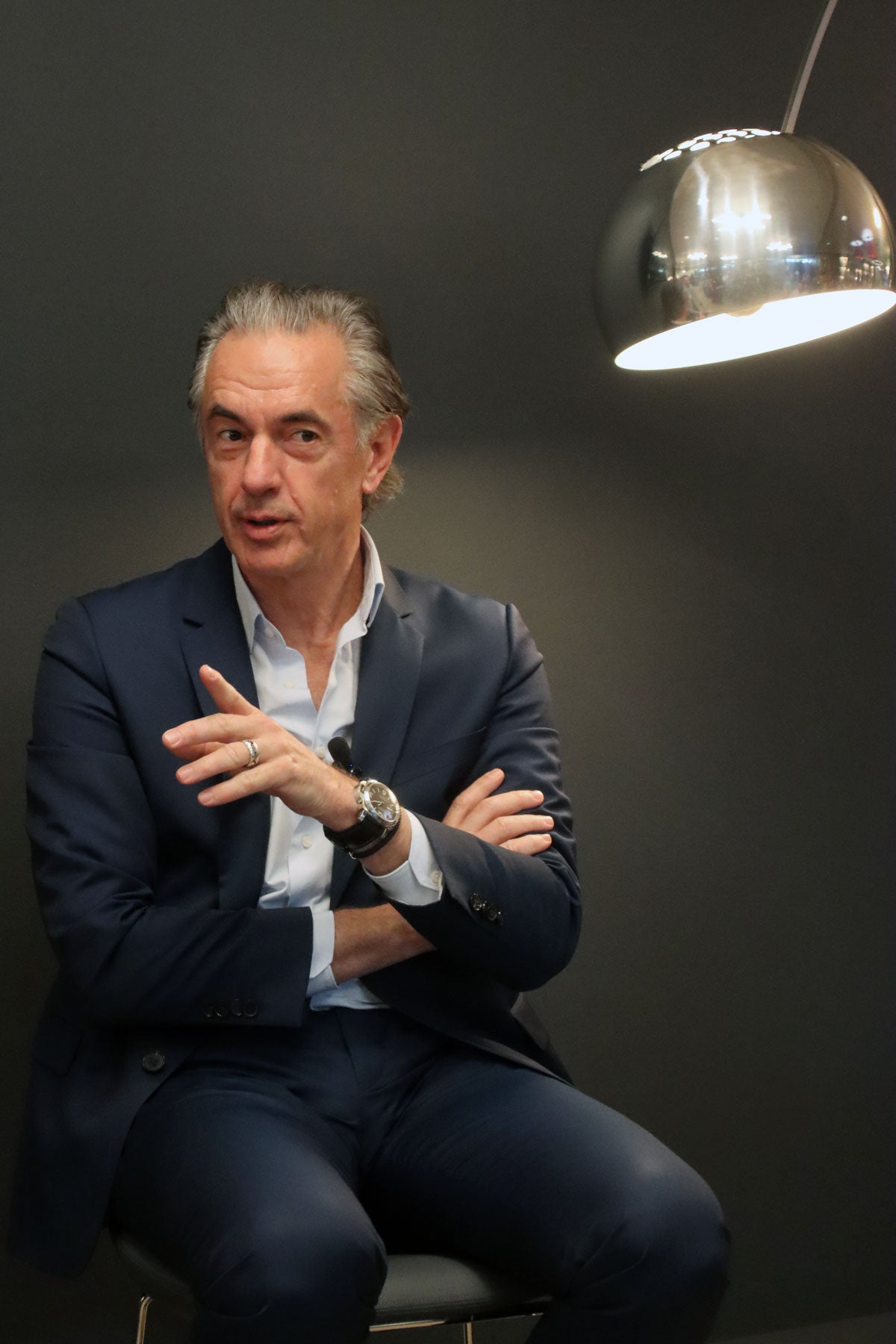
Holding the title of CEO at companies such as Louis Vuitton North America, Ralph Lauren and Dom Perignon, it suffices to say that Daniel Lalonde is a professional connoisseur of luxury. At the turn of the century, Lalonde began his 10-year path with renowned global conglomerate LVMH (Moët Hennessy Louis Vuitton) where his accolades included President and CEO of LVMH Watches + Jewelry North America, President of Louis Vuitton and Global President and CEO of Möet & Chandon and Dom Perignon.
After a decade of growing LVMH to one of the most successful luxury retail groups in the world, Lalonde became International President at Ralph Lauren in 2012, then joined French multi-brand holding group SMCP as CEO and Director in 2014. Now CEO of Milan-based Design Holding and its global portfolio of design brands including the likes of B&B Italia, FLOS, Louis Poulsen, and of course, Lumens, Lalonde stopped by headquarters and spoke with us about the company’s dedication to sustainability, the mission to beautify people’s lives, what it means to love your work and more.
How are you liking your trip to Northern California? Has anything stood out so far?
It’s been a very good trip so far. I had the fortunate luck of going for a very early run this morning in the streets of San Francisco and completely underestimated the hills. I went to the Embarcadero and came right back to the hotel. But otherwise, it’s been a good trip. The main purpose was to come here to see all of you at Lumens.
How many cities have you lived in?
16.
And your favorite?
Paris is probably the favorite. I’ve lived in Paris three times in my life—when I went to business school and then at different times in my career. My apartment is still in Paris, with a terrace that looks at the Eiffel Tower. So it’s kind of nice. I love the city. It’s a very elegant city, a very beautiful city. You can walk around everywhere. There’s always something you can discover. So probably Paris, followed by Milan. I really like Milan, so I moved there two years, or a year-and-a-half ago. And I love it a lot as well.
Do you have a favorite hockey team?
An unusual question! I’m Canadian originally, and I lived close to Montreal, so it would have to be the Montreal Canadiens.
What does Design Holding’s purpose of “We design for a beautiful life” mean to you?
It means a lot of things. Maybe a year ago we identified this idea. We were trying to find answers to the questions: Why are we here? Why do we come to work? And the ultimate question, what do we do? We have business goals, we have strategies. We have many things, but at the end of the day, why? So we tried to define it with our management team—something that was simple, understandable and powerful at the same time. We design for a beautiful life is what we came up with.
Now, because we are a company with 10 brands, 10 beautiful brands, it’s plural already, because that’s our ultimate core competency. That’s what we do: We either enable design, or create design, but design is what we do. Then, for a beautiful: Our products and services are intrinsically beautiful and they change people’s lives. They’re beautiful because we have about 100 of the world’s best architects and designers that design for our brands. These designs are functional and they’re sustainable. For me, beauty also includes sustainable design from the beginning. And then life: It’s not always necessarily people’s homes. It might be at the office. It could be in public spaces. We design a lot of projects in public spaces. The best hotels in the world use our products. So a beautiful life means in every part of life where we live. Outdoor, indoor, in the city. We’re in the business of beautifying people’s lives. So we design for a beautiful life seemed to make a lot of sense.
Can you speak a little bit about what the group is doing around sustainability?
We have five new core values, but they’re based on things we’ve been doing for a very long time, and sustainable beauty is one of those things. Design has to be not only aesthetically beautiful, but sustainable, as well.
I was having lunch last week with Patricia Urquiola, who designed Almendra. She started with something sustainable in the design. You can take it apart, recycle and re-use all the materials. It’s incredible. It started like that, and if we weren’t able to produce her design in that sustainable way, she wouldn’t work with us. So designers are a big force.
The most important thing about sustainability, also, is that we make things that last a lifetime. We look at B&B Italia, who design products that last your whole life. That, intrinsically, is very sustainable. So I think it’s something that’s important that we’ve been doing for a long time without knowing it in terms of the word “sustainability.”
For our consumers in the future, particularly millennials, sustainability is also an important part of their purchase decision. More and more, they will purchase products from a brand that has a purpose and a strong sense of making things in a sustainable way.
Sustainability, at DH, has three parts. We design for the planet. We have programs in place and strategies to reduce our carbon footprint. The second pillar is design for people. And here, it’s about creating an environment that’s a great place to work. The last pillar is design for culture. We termed culture because we think culture is very close to what we do. We have products that are in museums around the world. They’re at the Museum of Modern Art, the Beijing Design Museum. Across the world, these pieces are icons. They’re things to people. They represent a certain part of our lives in a very strong way. So giving back to culture is really important for us. Those are the three pillars that outline our sustainability program.
What’s the biggest challenge for DH and its portfolio of brands?
I’d say the biggest challenge we have today are the headwinds that we’re seeing in the market. Unfortunately, I think there were tailwinds after COVID for a year and a half at least. The market grew very fast and lifted a lot of brands, and a lot of businesses. I think we’re seeing in the last six months—maybe longer—some headwinds in the micro-environment. Inflation is still relatively high. I think there’s a little bit more uncertainty in the overall market. These days, it’s not only in the U.S. I see this in Europe as well, and we see it in Asia. It’s global. I think the biggest challenge is how to navigate headwinds. It’s easier to navigate tailwinds. What I define as good performance, in either tailwinds or headwinds, is that we have to gain market share. That’s the most important thing. We have to outcompete and be better than our competition, and as long as we gain market share in the domains that we’re in, that’s a good thing. Despite headwinds or tailwinds, we have to be a little bit more agile in the market in these times.
What’s the most interesting thing you’ve heard or learned about the industry since joining DH?
First of all, I loved this project. That’s why I decided to join about a year and a half ago. I think what we’re trying to do has not been done before. We’re pioneers where we’re trying to create the world’s first luxury design company with a portfolio of brands. It really hasn’t been done at the very top end, so this is uncharted territory. I think it’s very exciting. We’re all pioneers and Lumens has a big place to play in this journey as well.
I was surprised to learn how much we have to do to get there. It’s not exactly like LVMH, but it’s not far. We can have breadth and create strong global brands that have some synergies to help each other in order to create this incredible portfolio throughout the world. Luxury companies started this journey 30 or 40 years ago, so what we see today is a big change from where they were in our industry. What surprised me most is that our brands still don’t have a lot of direct contact with end consumers. I call it the direct consumer journey that we’re embarking on. It’s going to take a while, but ultimately, the goal for me is to have a larger e-commerce business—direct e-comm business for all our brands and more directly operated stores where we interface directly with our customers. We’re not there yet, and this journey is going to take a while. That’s where Lumens has a big, big, big place to help us.
Where does Lumens fit into the DH group, and how can we maximize our impact as members of DH?
Lumens’ strength as a channel is exceptional, and this strength can be cross-pollinated to our other DH brands. They’re very eager to learn, and the Lumens team has been very kind, and also very helpful in creating those links. Your relationship with the A+D community is very, very strong, and it’s one of the company’s biggest strengths. We have to keep building. There are still lots of opportunities, incredible opportunities. We can learn from each other, and we’re already having some very rich conversations. We’re stronger together. Nothing is random. We have a platform that can help all the brands accelerate their growth and learn from each other. There are also some synergies. I don’t try to force the synergies, but there are some natural synergies already occurring. Because of our 10 brands, we can be a one-stop-shop for contract projects, for example. It’s better to be a group. It’s much stronger to be a group than an individual brand. I’m convinced of that. And we’re happy to have Lumens be a part of it.
What do you consider to be your greatest achievement as a CEO and what leadership competencies are core to how you lead?
Well, as the CEO of Design Holding, I’d say it’s too early. I don’t think I’ve had a big accomplishment so far, because I think you need time to make that happen. I think what I’ve focused a lot of time and energy doing is making sure that we have an incredible team that’s working together. Even with a little friction, I think that’s good—to have a little friction. I spent a lot of time shaping the path of where we want to go because I believe that’s the most important thing to do, as a quality in a CEO and a leader. If you don’t know where you want to go, you can’t take anyone there.
As far as leadership skills, I would say clarity, meaning lucidity and a vision that’s super clear. We have 2,400 employees in the group. We know where we’re going, and we empower you. The second one I often say is that I think it’s good to love the color gray. I would say it relates back to agility because nothing in life is binary, black and white. There are shades one way or another, and the color gray isn’t bad in the sense that these days, we’re often in a world that is hard to predict. To have that agility, the ability to move and to shift because the environment has shifted and changed is a very important skill. And it’s something I look for in teams. And last is entrepreneurial spirit—that’s how we formed our company, how Design Holding was created. Those acquisitions were tremendously successful, but we had to shift from founder-led companies. Those founders were still there. And what made these companies so successful? Many things, but I believe one thing, the most important thing that’s in common among all the DH brands, is they were entrepreneurs. This is why I’m convinced we need to keep that entrepreneurial spirit alive in the company to make this different from other corporations. For me, the entrepreneurial spirit means, first of all, loving your work. Treating the company like it was yours. Making decisions and acting like it was your company. Would you do this if it was our company? If the answer is yes, it’s probably good.
What makes employees happy in your opinion and what steps do you take for their well-being?
I listen to what all of my teams tell me. What’s most important for our employees is making sure that they feel that they are making an impact. Knowing that you are coming to work, hopefully because you love it. I love what I do. It’s so important to put yourself in situations where you love what you do. Then you never look at it necessarily as work—and this has an impact. You want to be there, and you make an impact. I’ve always thought to myself, if I wasn’t at the office for six months and no one noticed, I’m in trouble. This is not good. So I think making an impact is important, and the ability to challenge people is important as well.
I believe in giving opportunities to people who want to do more. They could be very young, it doesn’t matter to me. I’ve always been a big believer in potential as more important than experience, and that’s what I try to do with my teams. The people on my teams have a lot of potential, and a very high level of responsibility because that’s exciting. Why else would people want to work? You have to enjoy the environment you’re in. We want to be a great place to work. I think that’s our overall goal, so it’s not easy. We have Italian companies with a different definition of what it means to have a great place to work. Three Danish companies. An American company. We’re trying to reconcile those differences, but I’m really happy. We don’t get anything done without great people who are passionate, motivated and want to make an impact.
How does diversity and inclusion impact you?
I think diversity makes us better. It better informs our decisions to hear from a lot of constituencies, and it’s better for decision-making. Everyone has a point of view and we should respect that. Listen to that. And again, I think teams are fundamentally stronger if they’re more diverse, so I think it needs to be a goal. Companies at all levels, executive levels and board levels—that’s the goal. Diversity is a really good thing.
Which e-commerce websites do the best job selling, storytelling and demonstrating category expertise? In other words, which websites do you hold as best in class?
I looked at a couple this morning, and strangely enough, I’m going to say Louis Vuitton. The reason is that it makes you dream—the combination between storytelling, imagery, films and the speed, because I think it has super performance and very few clicks to make an order, which I think is good.
What are the top three news sources you check for business insights?
I have a few on design, but I’m an avid consumer of news in the morning. I’m very routine. I get up at six, do a little yoga, stretching sessions, and then I have a banana and double espresso. I read for about 40 minutes. By 7:00am I’ve read probably five or six newspapers from the Wall Street Journal to the New York Times. And then in the design space is The Business of Home. I really devour these things very fast. Architectural Digest, Monocle, Wallpaper. All of those magazines as well. I would say there’s not one source that I use more than another.
What do you think DH’s biggest hurdle in becoming the first truly global portfolio of luxury brands for the home? What are the differences within the luxury sector, for example, the difference between home and fashion?
I think there are differences, but more importantly there are similarities. Here is our audience, how I would describe whoever she is. She might have an Hermès handbag, a Cartier watch. She’ll have Jimmy Choo shoes. And she’ll have a Camaleonda from B&B Italia, the Arco from FLOS. When I think of the luxury customer, we’re an extension of their purchases and what they love in their home. It’s a very horizontal path—lifestyle products that have a story of incredible craftsmanship.
2023 has started off with a bit of uncertainty and concern—inflation, fear of recession and a post-COVID environment. How do we plan for uncertainty and ensure a bright future?
I don’t think I have the magic answer here. I would go back to the color grey. I think this is where we need to be agile. Again, it doesn’t need to change all the time, but just be ready to respond to different market situations. Know when to invest more, when to invest less, when to wait. I think agility is the right way to respond overall as a team, to be comfortable to live through these cycles and adjust. I think all of our companies are in this agile mode. I think the environment will get better in the second half of the year. I’m not an economist, but most economists get it wrong anyway.
We’ll have to wait and see.
The post Connoisseur of Luxury: An Interview with Daniel Lalonde, CEO of Design Holding first appeared on The Edit | Lumens.com.
[ad_2]
www.lumens.com

